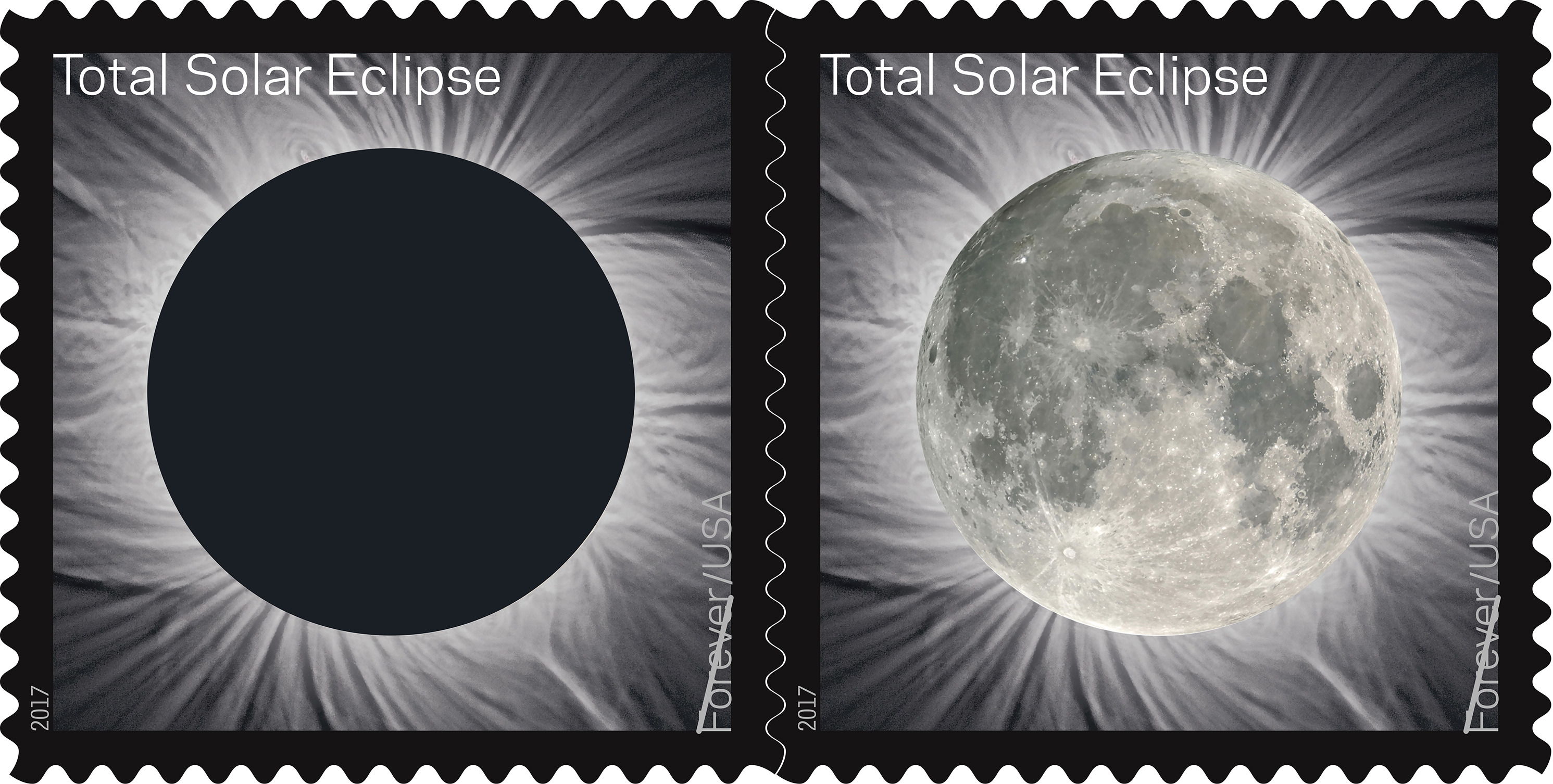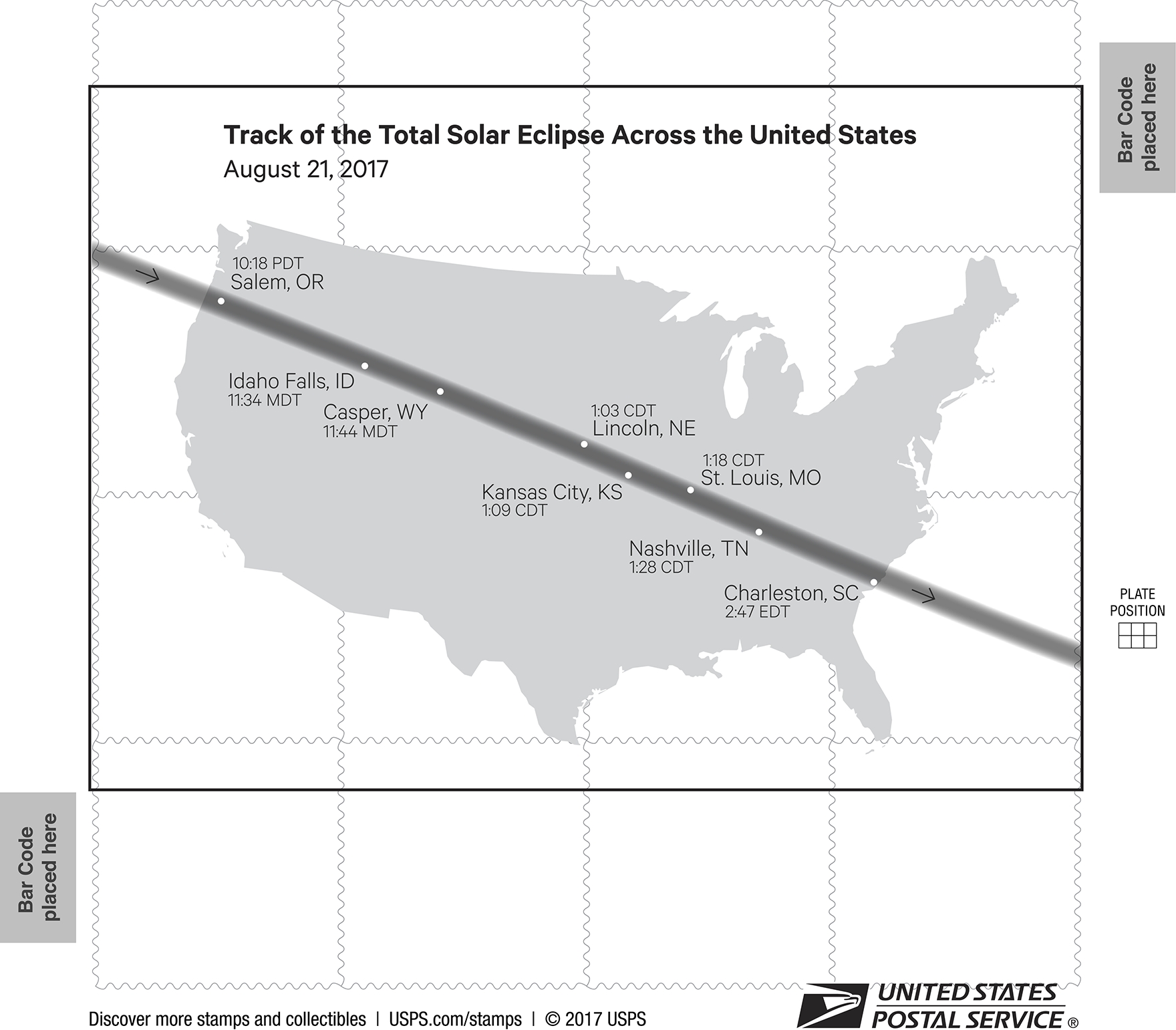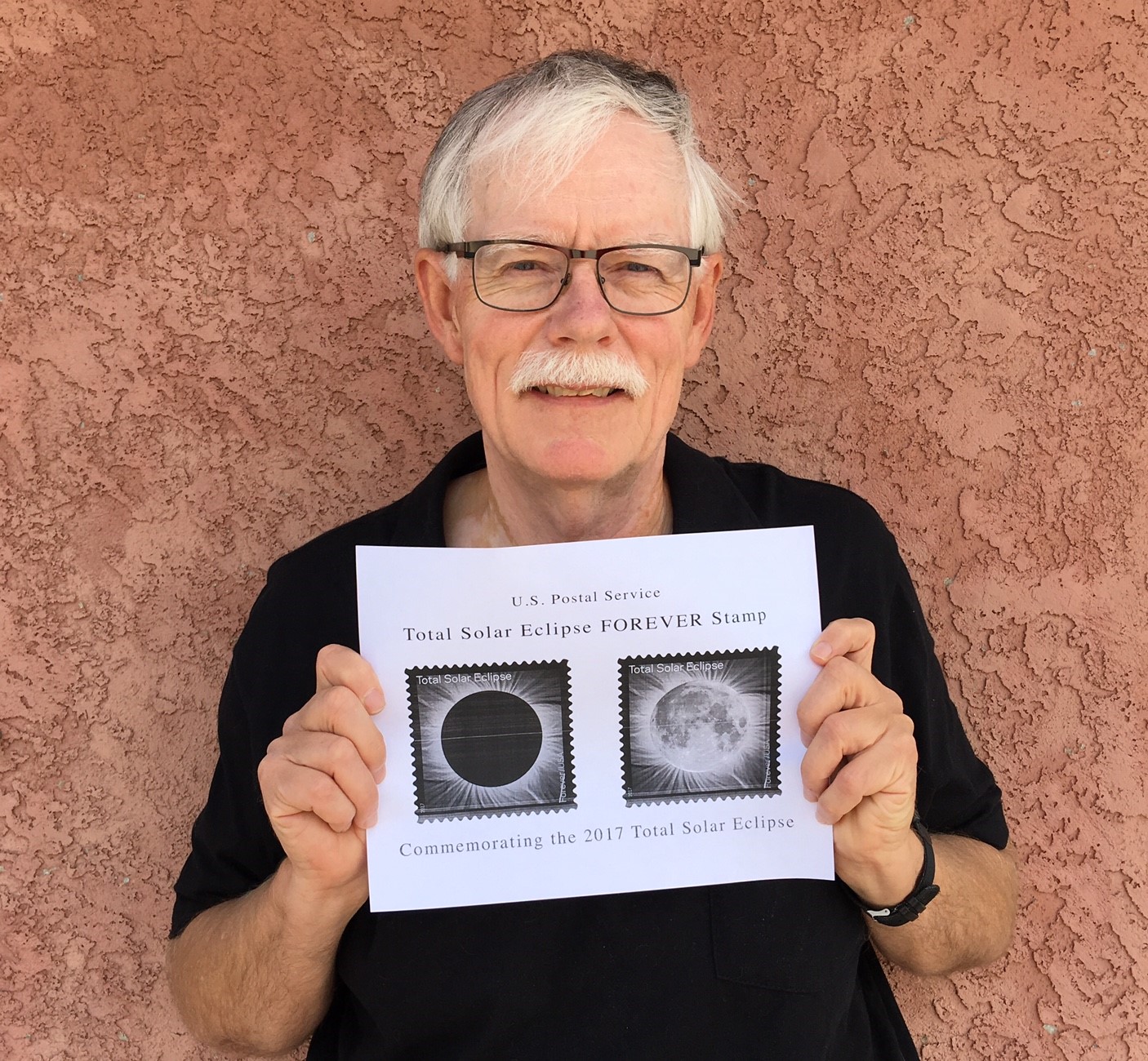Solar Eclipse 2017 Postage Stamps On Sale Now!
The Great American total solar eclipse is coming to a post office near you! The United States Postal Service (USPS) released its new color-changing solar eclipse Forever stamps Tuesday (June 20).
These are the first U.S. postage stamps to use thermochromic, or color-changing, ink. The stamp features an image of totality, with the moon completely blocking out the sun and appearing as a black disk surrounded by the sun's corona. But if you place your finger — or rub it — on the blacked-out portion of the stamp, the moon will appear. [Gallery: Awesome Space Stamps Through History]
USPS released the new Forever stamps two months before the Great American total solar eclipse will sweep across the U.S. in a line from Oregon to South Carolina on Aug. 21.
Jim Cochrane, chief customer and marketing officer of the United States Postal Service, dedicated the new Forever stamps at a First-Day-of-Issue ceremony at the University of Wyoming Art Museum in Laramie, Wyoming.
"With the release of these amazing stamps using thermochromic ink, we’ve provided an opportunity for people to experience their own personal solar eclipse every time they touch the stamps," Cochrane said in a statement.
Also present at the ceremony were several NASA officials and retired NASA astrophysicist Fred Espenak (also known as "Mr. Eclipse"), who took the stunning eclipse and moon photos featured on the new stamps.
Espenak, an eclipse chaser who has watched 27 solar eclipses, captured the image during a total solar eclipse in Jalu, Libya, on March 29, 2006. USPS used a shot of the moon that he took from his home in Arizona for the stamp's moon image.
Breaking space news, the latest updates on rocket launches, skywatching events and more!
"I’m honored to have my images on this unique stamp. But more importantly, the stamp will spread the news about America's great eclipse to many more people than I could ever reach," Espenak said in the statement. "A total eclipse of the sun is simply the most beautiful, stunning and awe-inspiring astronomical event you can see with the naked eye."
You can find the stamps in select U.S. Post Office locations, or you can buy them online. Like all Forever stamps, they cost 49 cents each and are valid forever.
Email Hanneke Weitering at hweitering@space.com or follow her @hannekescience. Follow us @Spacedotcom, Facebook and Google+. Original article on Space.com.

Hanneke Weitering is a multimedia journalist in the Pacific Northwest reporting on the future of aviation at FutureFlight.aero and Aviation International News and was previously the Editor for Spaceflight and Astronomy news here at Space.com. As an editor with over 10 years of experience in science journalism she has previously written for Scholastic Classroom Magazines, MedPage Today and The Joint Institute for Computational Sciences at Oak Ridge National Laboratory. After studying physics at the University of Tennessee in her hometown of Knoxville, she earned her graduate degree in Science, Health and Environmental Reporting (SHERP) from New York University. Hanneke joined the Space.com team in 2016 as a staff writer and producer, covering topics including spaceflight and astronomy. She currently lives in Seattle, home of the Space Needle, with her cat and two snakes. In her spare time, Hanneke enjoys exploring the Rocky Mountains, basking in nature and looking for dark skies to gaze at the cosmos.



